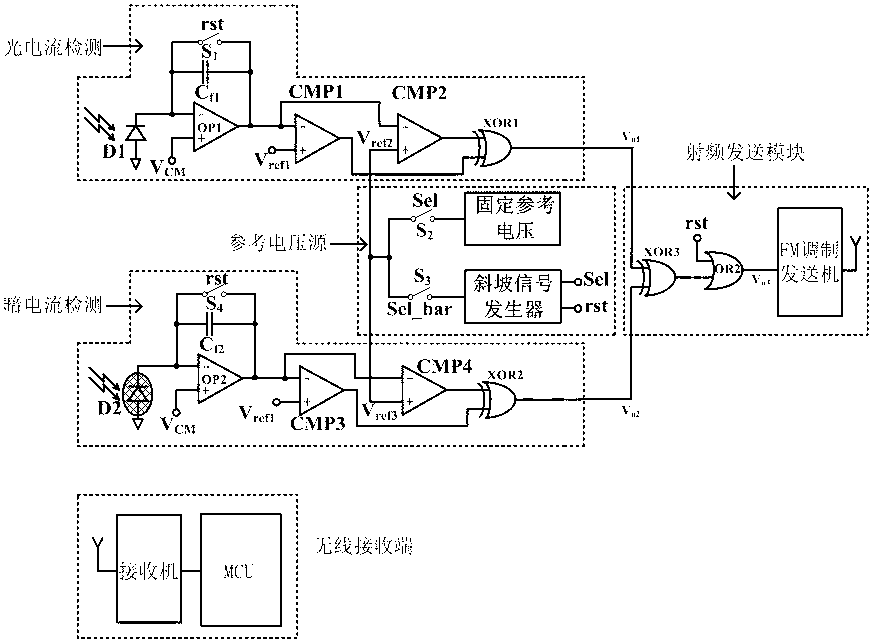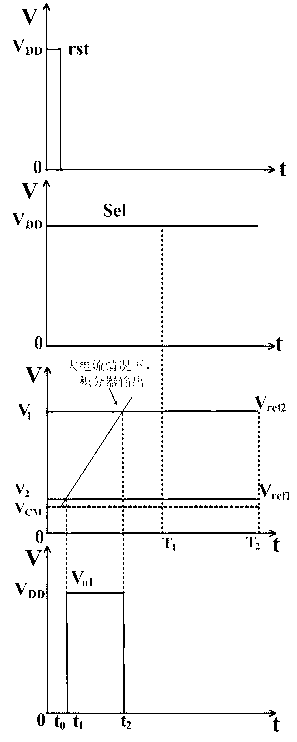Pulse width modulation-based fluorescent detection and optical-to-digital conversion system
A fluorescence detection and digital conversion technology, applied in the field of fluorescence detection, can solve the problems of high power consumption, inapplicability, and long integration time, and achieve the effects of improved accuracy, simplified data collection and processing, and reduced overall power consumption
- Summary
- Abstract
- Description
- Claims
- Application Information
AI Technical Summary
Problems solved by technology
Method used
Image
Examples
Embodiment Construction
[0024] The present invention will be further described below in conjunction with drawings and embodiments.
[0025] The structure of the circuit is as figure 1 As shown, the circuit is divided into two circuits, one for photocurrent detection, and one for photodiode leakage current and dark current detection. Each way includes photodiode, integrator, comparator and logic gate circuit. The reference voltage source of the circuit composed of a fixed reference voltage and a ramp signal generator. For this path of photocurrent detection, the photodiode D1 converts the light signal into a current signal. Switch S 1 , the feedback capacitor C f1 It forms an integrator with the operational amplifier OP1, and converts the current signal into a voltage signal. The output of the integrator is connected to the inverting inputs of two identical comparators CMP1 and CMP2. The positive input terminal of CMP1 is connected to the fixed reference voltage V 1 , the positive input of CMP2...
PUM
 Login to View More
Login to View More Abstract
Description
Claims
Application Information
 Login to View More
Login to View More - R&D
- Intellectual Property
- Life Sciences
- Materials
- Tech Scout
- Unparalleled Data Quality
- Higher Quality Content
- 60% Fewer Hallucinations
Browse by: Latest US Patents, China's latest patents, Technical Efficacy Thesaurus, Application Domain, Technology Topic, Popular Technical Reports.
© 2025 PatSnap. All rights reserved.Legal|Privacy policy|Modern Slavery Act Transparency Statement|Sitemap|About US| Contact US: help@patsnap.com



